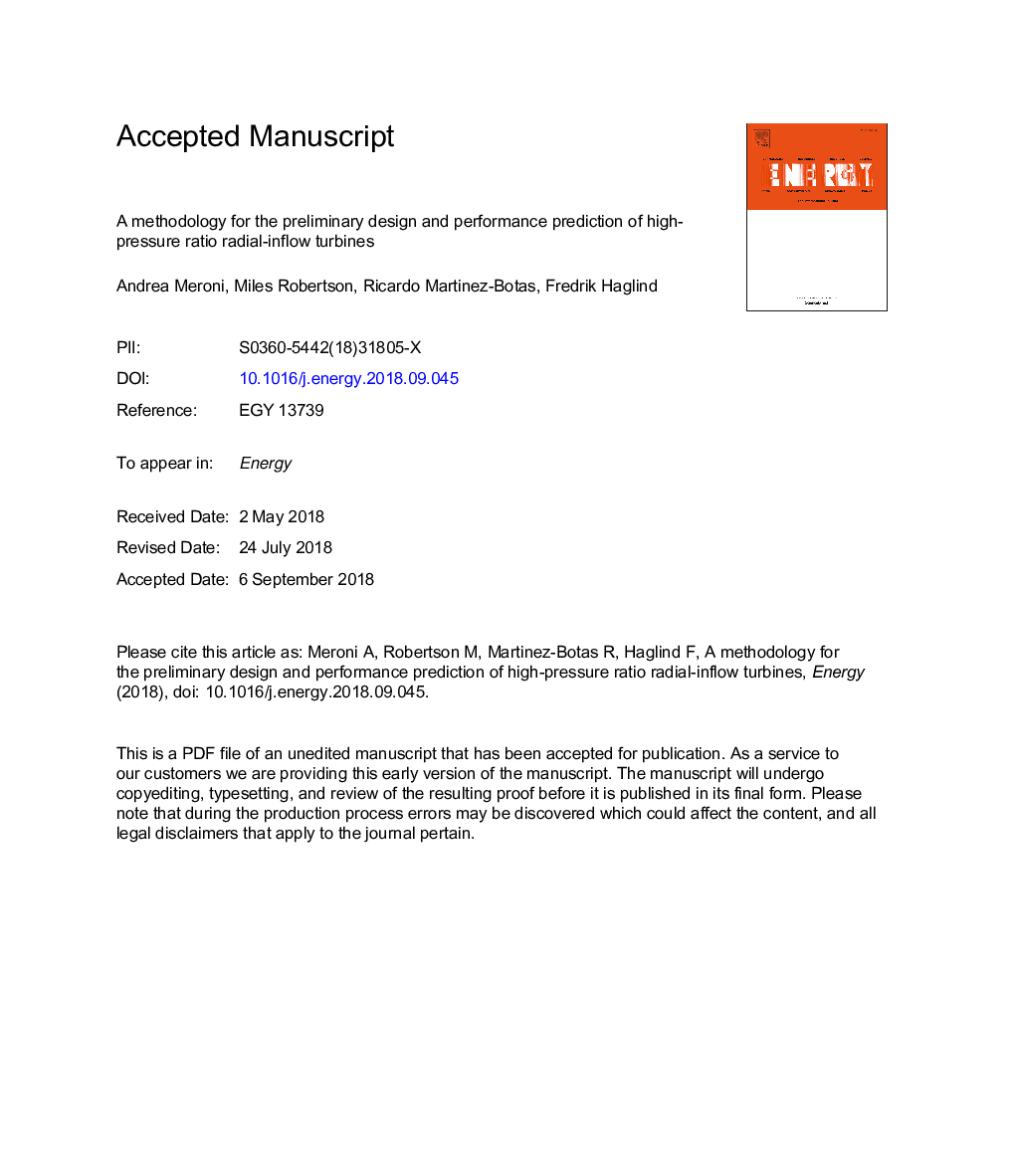| Article ID | Journal | Published Year | Pages | File Type |
|---|---|---|---|---|
| 10147855 | Energy | 2018 | 29 Pages |
Abstract
Modern power generation technologies, such as organic Rankine cycle power systems, require turboexpanders operating with high-efficiency and high power density. These features often lead to high-pressure ratios machines, characterised by the presence of choking and supersonic flow conditions. This paper proposes a comprehensive methodology for the preliminary design and performance prediction of radial-inflow turbines operating at high-pressure ratios. A steady-state, mean-line model of a radial-inflow turbine is developed including real-gas effects and a detailed modelling strategy for the treatment of choking flow conditions. In addition, a set of loss models tailored to high-pressure ratio radial-inflow turbines is developed. After a global sensitivity analysis, the model is calibrated by means of a multi-objective optimisation with a Genetic Algorithm and using the data of six high-pressure ratio turbines with total-to-total pressure ratios up to 5.8. The calibration method allows a significant reduction in the overall predicted deviation of the turbine isentropic efficiency and mass flow rate. The design model yields predicted deviations in isentropic efficiency within ± 3 %-points and the off-design model within 5%. The methodology and the results are intended to be used as a benchmark for the future development of radial-inflow turbines in high-pressure ratio applications.
Related Topics
Physical Sciences and Engineering
Energy
Energy (General)
Authors
Andrea Meroni, Miles Robertson, Ricardo Martinez-Botas, Fredrik Haglind,
